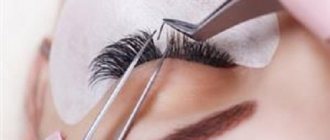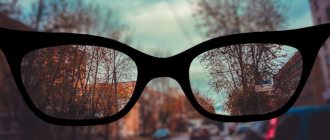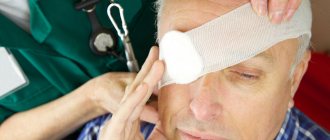Agree that many people prefer to read in a supine position, because reading is a pleasant hobby and a well-deserved rest. In this position we feel most comfortable and relaxed. We feel 100% relaxed. And in general, this process gives off a pleasant homely atmosphere. But, since childhood, parents at home and teachers at school frightened us with scary stories about how harmful it is to the eyes. Is it really?
Popular opinion
There is an opinion that reading in the dark, for example, lying in bed under a lamp, and even more so with a flashlight under the blanket, leads to the development of myopia due to overstrain of the eyeballs. In fact, there have been no long-term experiments on how reading in the dark or concentrating on small objects and letters in the twilight affects vigilance.
At the same time, many have noticed that if you read for a long time before going to bed, especially from a screen, in the morning the corneas and eyelids become drier, and the images become blurry. Gradually, the ability to see is restored, but if you stare at a glowing screen for years and for a long time before going to bed, your vision in the morning will be restored more and more slowly.
If you squint your eyes, you can remain squinted for life.
It is a myth that your eyes will become frozen in this position if you squint too often. Strabismus or strabismus
occurs when the eyes do not look in one direction at the same time. Each eye has six muscles attached to it, controlled by signals from the brain that control their movement. When the position of the eyes is disturbed, the brain receives two different images. Over time, this can lead to more severe vision problems. But strabismus is not caused by a person deliberately crossing their eyes for a short period of time.
Scientists' opinion
Ophthalmologists are confident that changes in the structure of the eyes leading to myopia do not occur when reading in the dark. The apples return to their normal state after the cause of their tension is eliminated.
The organs of vision can adapt to any level of illumination. In the dark, the pupil dilates, allowing more light rays to pass through to the retina than in bright light, and a person becomes able to distinguish small details. But such activity leads to overexertion, which can at least cause a headache.
In our century, an experiment was conducted in Great Britain that proved that long work with objects located nearby, which requires straining the eyes, can cause the development of myopia in adults. However, scientists believe that the key factor in the occurrence of myopia is not light, but the duration of looking and genetics.
What exactly a person reads also plays a role. It has been proven that poor vision of schoolchildren in Southeast Asia is due to the fact that hieroglyphs are more difficult to read than letters. In some countries in this region, 90% of graduates suffer from myopia. The reason for the deterioration in their ability to see is excessive strain on the visual organs while looking at hieroglyphic writing. And it doesn’t matter whether this activity is carried out in the dark or in full light.
Heredity plays the most important role in the formation of refractive errors. A child whose father and mother are nearsighted inherits this pathology with a 40% probability. This figure was obtained after a UK study of the health of identical and fraternal twins. It turned out that vigilance is determined by heredity by 86%. If children have inherited a tendency toward myopia from their parents, then with systematic visual strain, the likelihood of developing myopia greatly increases.
Thus, genes play the most significant role in the development of myopia. However, external factors can also negatively affect vigilance.
There have been almost no studies on the effects of reading in the dark on the condition of the eyes. There are no dissertations or articles on this topic. But there are studies that neglecting the rules of working hygiene is harmful to eye health. It is not for nothing that there are sanitary requirements for minimum illumination of premises in which children of preschool and school age study and adults work. There are SanPin and GOST standards that regulate the level of natural and artificial lighting in workplaces. This suggests that light levels are important.
If you read while lying down, you will ruin your eyesight!
Many consider this a myth, but in fact, if you read in a horizontal position, the risk of vision loss increases. And the main reason here is the distance from the face to the book. The minimum distance should be 33 cm. But maintaining such a distance in a horizontal position is not easy. In fact, after just a few minutes, the distance is significantly reduced and eye strain increases. The result is excessive fatigue, dry eyes and discomfort. As a rule, owners of such a bad habit experience deterioration in their vision, if we talk about people from 20 to 30 years old, already after a year.
But this is a direct, basic parallel between reading while lying down and worsening vision. In addition, impaired blood circulation affects eye health. When reading horizontally, the body takes an incorrect position and blood stagnates in the cerebral cortex. This effect does not cause much harm to health, but over time, symptoms such as headache, dizziness, and increased intraocular pressure may appear.
Reading while lying down can contribute to the progression of any existing eye abnormality: farsightedness, myopia, strabismus, astigmatism. Most of all, those who like to read and relax in bed at the same time are at risk of dystrophy of the eye muscles.
It’s also worth remembering about reading in poor lighting, as this factor is often accompanied. Dim light from a bedside floor lamp helps to create a pleasant environment for rest and relaxation, and also has a remarkable effect on the development of myopia. The situation will get much worse if you already have a vision defect and use glasses or contact lenses.
According to recent studies, if you take a horizontal position, you need to take off your glasses altogether, as their lenses will begin to refract light rays incorrectly. What about contact lenses, the already serious strain on the eyes will increase due to the pressure of the lens on the surface.
A computer or TV damages your eyesight.
Ophthalmologists often debate this topic, but most agree that for most people it is not a cause of poor vision.
On the other hand, more and more people are complaining of symptoms such as dry and irritated eyes, headaches, eye strain and difficulty focusing after prolonged screen time. This phenomenon has been called computer vision syndrome
, which can get worse when trying to focus on a small tablet or phone screen.
Experts recommend using the 20-20 rule
to eliminate the effects of time spent in front of a computer or TV screen.
It goes like this: Every 20 minutes, take a 20-second break to look at a distance of about 6 meters
.
You can't open your eyes underwater
Different types of water should be taken into account. For example, pool water can actually have a negative impact on your eyesight because it contains chlorine, which is used for disinfection. Worn-out sewer pipes in an old house can be a source of harmful microorganisms, so you shouldn't open your eyes in the bath either - otherwise you may experience irritation or conjunctivitis. Clean fresh water is perfect for swimming with your eyes open, but only if you are confident that the reservoir is environmentally friendly. You can also open your eyes in salt water, but with a high salt concentration it will be uncomfortable. For example, in the Baltic Sea you can open your eyes, but in the Mediterranean or Red Sea you should not do this. One way or another, always open your eyes slowly under water to avoid unpleasant sensations.
Exercises for eye fatigue
1. Performed while sitting. Close your eyes tightly for 3-5 seconds, and then open them for 3-5 seconds. Repeat 6–8 times. Helps strengthen eyelid muscles, relax eye muscles, improve blood circulation.
2. Performed while standing. Look straight ahead for 2-3 seconds. Then place your finger at a distance of 25–30 cm from your eyes, move your gaze to the tip of your finger and look at it for 3–5 seconds. Lower your hand. Repeat 10–12 times. Exercise reduces eye fatigue and reduces visual work at close range.
3. Performed while sitting. Using three fingers of each hand, lightly press on the upper eyelid, and after 1-2 seconds, remove your fingers from the eyelid. Repeat 3-4 times. Exercise improves the circulation of intraocular fluids.
Colorblind people do not see color.
The human eye and brain work together to interpret colors, and each of us perceives colors slightly differently. We all have photopigments in the cones of the retina. People suffering from hereditary color blindness have defects in the genes that are responsible for the production of photopigments. However, it is very rare to find people who do not see color at all.
It is more common for colorblind people to have difficulty distinguishing between colors, such as red and green, blue and yellow. Although color blindness is much more common among men, it also affects a small number of women.
Sunglasses should only be worn in summer
Snow reflects ultraviolet light and can be quite dangerous to the eyes. People who wear sunglasses even in winter are doing the right thing. It is no coincidence that residents of the northern regions have been using handmade sunglasses for a long time.
Myth 1. Carrots and blueberries are very good for vision.
Partially true. But to maintain good vision, you need to eat not a lot of these foods, but a lot. For example, in order for a person to receive the daily requirement of vitamin A along with carrots, he must eat at least 5-6 kg of it per day. And the retina requires not only vitamin A, which everyone knows about, but also substances such as lutein and zeaxanthin. For example, there are a lot of them in marigolds and spinach. So they can also be included in the list of the most useful foods for vision.
Myth 2. Poor-quality cosmetics or cosmetics left overnight can damage your eyesight.
No. It can ruin your eyelids and skin.
Myth 3. Vitamins and dietary supplements are very good for the eyes
Yes, it’s true, but you should use them without fanaticism. After all, they contain a complex of vitamins: for example, selenium and zinc, which are important for each of us, which affect both the general condition of the body and vision. You don’t need to drink them all the time, but doctors advise their patients to take such tonics for three months, after which they take a break.
Myth 4. Green color has a beneficial effect on vision
This is partly true. Green color has a beneficial effect on the psyche and calms, and yellow, by the way, too. But they have little to do with the eyes.
Myth 5: LCD screens protect against vision problems
No it is not true. Radiation comes from any television or computer screen. And the vision strains in front of any of them, even in front of very good and modern ones. Shields or LCD screens may only absorb some of the radiation but may not completely remove the hazard.
Myth 6. A modern child from an early age cannot do without a TV and a computer.
This is a misconception that leads to vision problems in children due to the carelessness of their parents, who at the age of three sit the child in front of the computer, and at five they are surprised that he does not see something. Ideally, a child aged 5 – 12 years should receive TV and a computer in doses: about 30-40 minutes twice a week. And for young children, TV and computers should be completely contraindicated.
Myth 7. School tablets are absolutely harmless
More likely no than yes. Tablets can only be recommended for high school students and only if certain visual hygiene is observed. The teacher must ensure that children are distracted from working in front of screens every 10-15 minutes and switch to another activity.
Myth 8. When a child goes to school, the load on his vision becomes so great that it will fall anyway
Not true. There are certain rules, simple and important, that many of us know, but are too lazy to follow. Meanwhile, they can help keep your eyes in order. In the lower grades, the teacher should conduct eye exercises. The lighting in which children work, read or write is also very important. At home, the workplace for a schoolchild should also be equipped taking into account all hygiene requirements. Let us also note that it is better for schoolchildren to visit an ophthalmologist several times during the school year, since it happens that in September a child has “1” vision, and in the spring he already sees only half of the table.
Myth 9. If you slap children, the child may lose his sight.
The truth is that the occipital part of the brain is responsible for vision, so damage to it can actually lead to vision problems. Well, you shouldn’t give children slaps on the head anyway.
Myth 10. A person working at a computer’s vision adapts to high daily loads.
Not true. Those who work at a computer need to visit an ophthalmologist every six months. Then, in the early stages, you can detect some “problems” with the eyes and try to eliminate them or slow down the development of the disease. If you wait for pronounced symptoms, you can become one of those patients who at 35 or 40 years old comes with the words: “Doctor, I don’t see anything.” And the doctor looks into the eyes and understands that vision in one of them has already been irretrievably lost, and in the other it is rapidly declining.
Myth 11. Phones, iPhones and e-readers damage your eyesight.
Yes, and they cause no less harm, and due to their own size and stress, even more than desktop computers.
Myth 12. Reading books is no less harmful than playing on the computer.
Not true. This is often the case among those who damaged their eyesight in childhood by reading books under a blanket with a flashlight in their hand. If you follow the basic rules, in particular, monitor the lighting and the correct position while reading, it will not cause harm. Vision will deteriorate if you read in the dark, lying down or under the bright sun.
Myth 13. If I start wearing glasses, I won’t get off them.
Not true. With minor changes in vision, wearing glasses for several months is enough to see changes for the better.
Myth 14. Sunglasses do more harm to the eyes than good.
It depends on the glasses. Sunglasses made from cheap Chinese plastic are definitely harmful, while high-quality glass ones are useful. The fact is that glass absorbs the ultraviolet spectrum, while plastic transmits it.
Myth 15. Dropping urine, honey and blueberry juice into your eyes is beneficial.
You shouldn't experiment with your vision like that. When treating vision problems, you should not get carried away with urine therapy at all, and honey and blueberries can cause serious irritation and an allergic reaction. For those patients who really want to try similar methods of eye health, I advise you to instill honey, diluting it in a ratio of 1 to 10, and only if there are no adverse reactions, make these drops more concentrated. Naturally, you should first make sure that the patient is not allergic to bee products.
Myth 16. Non-traditional treatment methods can help with vision problems: homeopathy, herbal medicine, acupuncture
Everything is good together. They can help, but they won't get rid of problems. I have not met a single patient who could be completely cured using these methods. But many people have lost their sight...
Myth 17. An ophthalmologist can only test visual acuity and select glasses.
Not true at all. Some diseases, such as diabetes or brain tumors, are often first detected by ophthalmologists. Also, the condition of the retina shows the consequences of traumatic brain injuries and some other conditions of the body as a whole.
According to experts from the American Academy of Ophthalmology, reading in dim light damages your eyes no more than taking photographs in dim lighting damages your camera. The only trouble that can come from reading at dusk is a headache due to having to strain your eyes. And even then this happens only if the vision is no longer in order.
Myopia goes away with age
Many people believe that after 40-50 years of age, a myopic person’s vision improves: myopia is compensated by the developing farsightedness of senile people. This really happens, but not all myopic people. For the majority, myopia, alas, does not decrease and is not corrected by farsightedness. On the contrary, to one vision problem a second one is added, and to glasses “for distance” - glasses “for near”.
Need to eat more carrots
Vitamin A contained in carrots is a key element for maintaining the overall health of the whole body, but is not a specific medicine for the eyes. Those who care about their eyesight need to eat more vegetables and fruits such as pumpkin, beans, peas, corn, spinach, celery, persimmons, kiwi, bell peppers, oranges, peaches, mangoes. These products contain lutein and zeaxanthin, substances that protect the eyes from cataracts.
Babies see the world in black and white
In addition to the myth that a newborn baby sees everything upside down, you can often hear that a baby has black and white vision and only over time the world becomes colored for him in different colors. This is not true, although there is some truth here. In fact, a newborn sees the same colors as an adult, but his “picture” is blurry and not as clear. And the baby begins to focus his gaze selectively, gradually isolating certain colors from the surrounding reality. At the same time, first of all, babies begin to fix their gaze on objects of a yellow-green color scheme, but very soon other colors join it.
Sharpness is a sign of farsightedness
The following misconception is also very common: if a person sees the very last lines in the vision test table, then he either already has farsightedness, or will develop it in the near future. In fact, this only indicates that the person has visual acuity above normal - this is more common than we think. The one who sees the penultimate line has 150 percent vision, the one who sees the last line has 200 percent.
Children should not be photographed with flash
Flash photography does not harm your baby's eyes. In some cases, it may be not so much ophthalmologists who are against photography as neurologists and psychiatrists - a flash can frighten a child, so it is advisable not to photograph him too closely. However, flash photography can help identify serious illness. If in the photograph one of the child’s eyes is different in color from the other, if the “red-eye effect” does not appear (where it is present in all other people captured in the photograph), then it is better to play it safe and consult an ophthalmologist. The fact is that sometimes similar features of the image of the eyes in a photo with a flash can appear with congenital cataracts.
If you bring your eyes to the bridge of your nose, you will have squint
Strabismus is most often a congenital disease. It can also be caused by injuries and diseases of the brain, strabismus can develop due to farsightedness or myopia, it can appear after a strong fright, after infectious diseases (measles, scarlet fever, influenza). At the same time, such acquired strabismus appears, as a rule, before the age of three; at older ages it develops very rarely. And bringing your eyes to the bridge of your nose or crossing them to look at three-dimensional pictures is absolutely harmless.
By the way
The main reason for the development of myopia has not yet been clearly established; scientists are putting forward more and more new hypotheses. Thus, Australian researchers claim that the cause of early myopia in children is prolonged exposure to confined spaces, for example, in school classrooms. But the danger to the eyes of TV and computers is now being questioned by some experts. Employees of the Children's Hospital of Los Angeles came to the conclusion that spending many hours in front of a TV screen cannot damage a child's vision. Scientists from the University of Rochester have discovered that computer shooting video games train the eyes and improve vision.
Why is the effect of LED lamps on human health considered positive?
LED products are recognized as safe and are being actively introduced. There are several arguments for this trend:
- LED lamps do not contain hazardous substances - they do not contain mercury, as in fluorescent light sources, there are no radioactive elements, and heavy metals are contained in device microcircuits in negligible quantities;
- The positive effect of LED lamps on human health is due to the fact that most of them emit a stream of light in a spectrum that is comfortable for vision;
- There is no risk of burns - LED lamps heat up minimally, unlike incandescent or halogen lamps;
- Safety when broken - this is due to the absence of both a glass bulb in LED light sources and mercury vapor.










